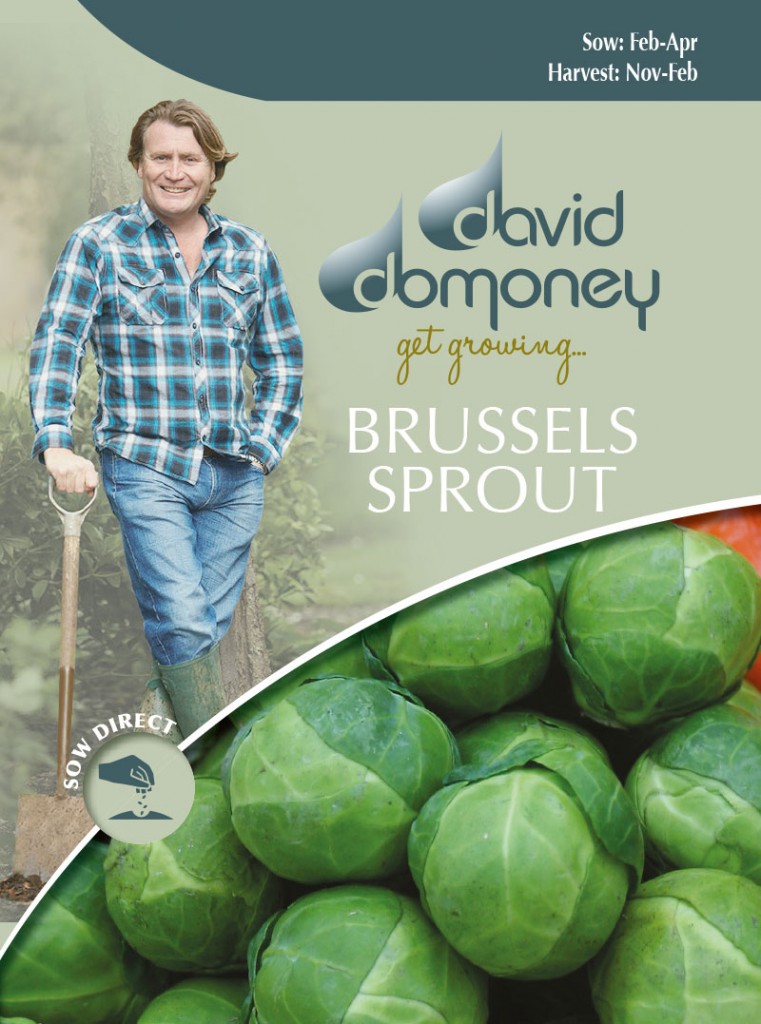Brussels Sprout
Brussels Sprout Brest F1
An modern variety with exceptional vigour and disease resistance for large and reliable crops. The tightly formed ‘buttons’ are closely packed all along the stem and have an noticeably sweeter flavour than traditional types. Perfect for kids and anyone who has been a bit unsure about sprouts in the past. Crops should be ready from late autumn onward and available for picking on Christmas morning, fresh for Christmas dinner.
Growing Advice

Sow Indoors
Sow indoors February to April. Sow thinly 0.5cm deep into trays of compost. Water well and place in warm, light position, away from cold draughts and out of intense, direct sunlight. Keep the compost just moist and be careful not to overwater, the compost should almost dry out before it is watered again. Seedlings should start to appear in approximately 14-21 days. Carefully transplant the seedlings to individual pots when they are large enough to handle and keep moist. When plants are about 10cm tall, acclimatise them to outside conditions, avoiding any late frosts. Place plants outside in a sheltered spot during the day and bring them inside again at night when temperature fall. Do this for a week or two, until the plants have hardened off. Then transplant to a sunny growing position 60cm apart. Plant seedlings deep, right up to the first set of leaves and be sure to firm the young plants in well to prevent the plants from rocking in the wind, which can damage their delicate roots. Keep the soil moist and remove any weeds as they appear.
Sow Outdoors
Sow outdoors March to April. Brussels sprouts can be sown directly outdoors for ease, although plants may take a bit longer to get going and therefore crop slightly later. If possible choose a sunny location for best results. All brassicas like good fertile soil so it’s worth digging in a slow release fertiliser or some organic matter before you start. Sow directly where plants are to grow 1.5cm deep, in shallow trenches 15cm apart. Cover the seeds with fine soil and water well. Keep the soil moist and remove any weeds as they appear. When young plants are 10cm tall transplant them to a final spacing of 60cm apart. Plant seedlings deep, right up to the first set of leaves and be sure to firm the young plants in well to prevent the plants from rocking in the wind, which can damage their delicate roots. Keep the soil moist and remove any weeds as they appear.
Top Tips About Seeds
Once the seed packet has been opened, the seeds can be stored in an airtight container until required for further sowings. Brussels sprouts seeds will maintain their vigour for a good number of years.
Growing in Containers
Brussels sprouts are not recommended for patio containers.
Common Problems
Young brassica plants are a real favourite with pigeons and later in the summer caterpillars can also become a problem. If you use a fine enough netting, held well above the plants, this will stop both the pigeons eating the young leaves and the cabbage white butterflies from reaching the plants to lay their eggs. To prevent disease, rotate brassica crops so they are not grown in the same location for at least a couple of years.
Harvest
Harvest from November to February. The sprouts develop in succession from the bottom of the plant upwards so the lowest ‘buttons’ will be ready to pick first. So always harvest from the bottom up. Pick the sprouts as soon as they are large enough and well before the start to open up. Also dispose of any sprouts that have yellowed or opened up, to help the remainder stay healthy and free of pests.
Ideas for using your brussels sprouts
Drawing a little soil up around the stems of developing plants will help to prevent wind rock as the plants get larger. Check plants after windy weather and firm them in again if necessary. The tips of the plants are very tasty and can be cut when all of the sprouts have been harvested, but not before as the tops provide important weather protection for the spouts below. They can then be lightly boiled or steamed and eaten like spinach or spring greens. Used up plants are best removed straight away so they don’t attract pests like aphids, or disease into the vegetable garden.

